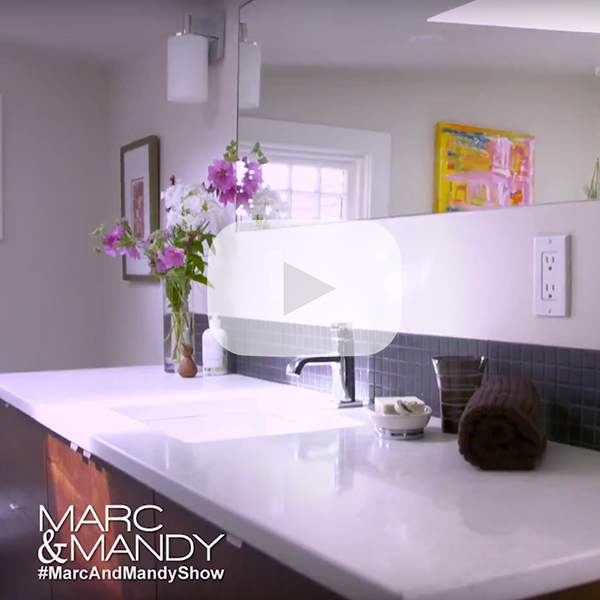We ask A-LOT of our kitchen floors with various types of torture. Spills, drips, blender accidents, dropped utensils, not to mention the foot traffic and the pets. We need both durability and style for our kitchen flooring material.
Today I’ll go through 5 different options.
1. Hardwood
Emphasis on the “hard” part of hardwood. Hardwoods like Oak or Hickory are a better option than a soft wood like Fir or Pine. These will dent, scratch, and suffer water and food bowl damage over the years.
Hardwood floors, even with the possibility of damage and sensitivity to water and scratches, can still be a good choice if you’re looking for a timeless look. They can be re-sanded and refinished a number of times before needing full replacement so it’s a good option.
A quick little note about engineered hardwood….
This type of product consists of a thin layer of hardwood veneer glued onto a plywood base. The thickness of the hardwood is where the main difference lies – the thicker the top layer, the better, and it allows for refinishing later. The other difference is the factory finish. They are gaining in popularity as they can be quicker to install. This is done using a variety of methods – nailed down, floating, or glued down. Personally I wouldn’t choose the glued down option.
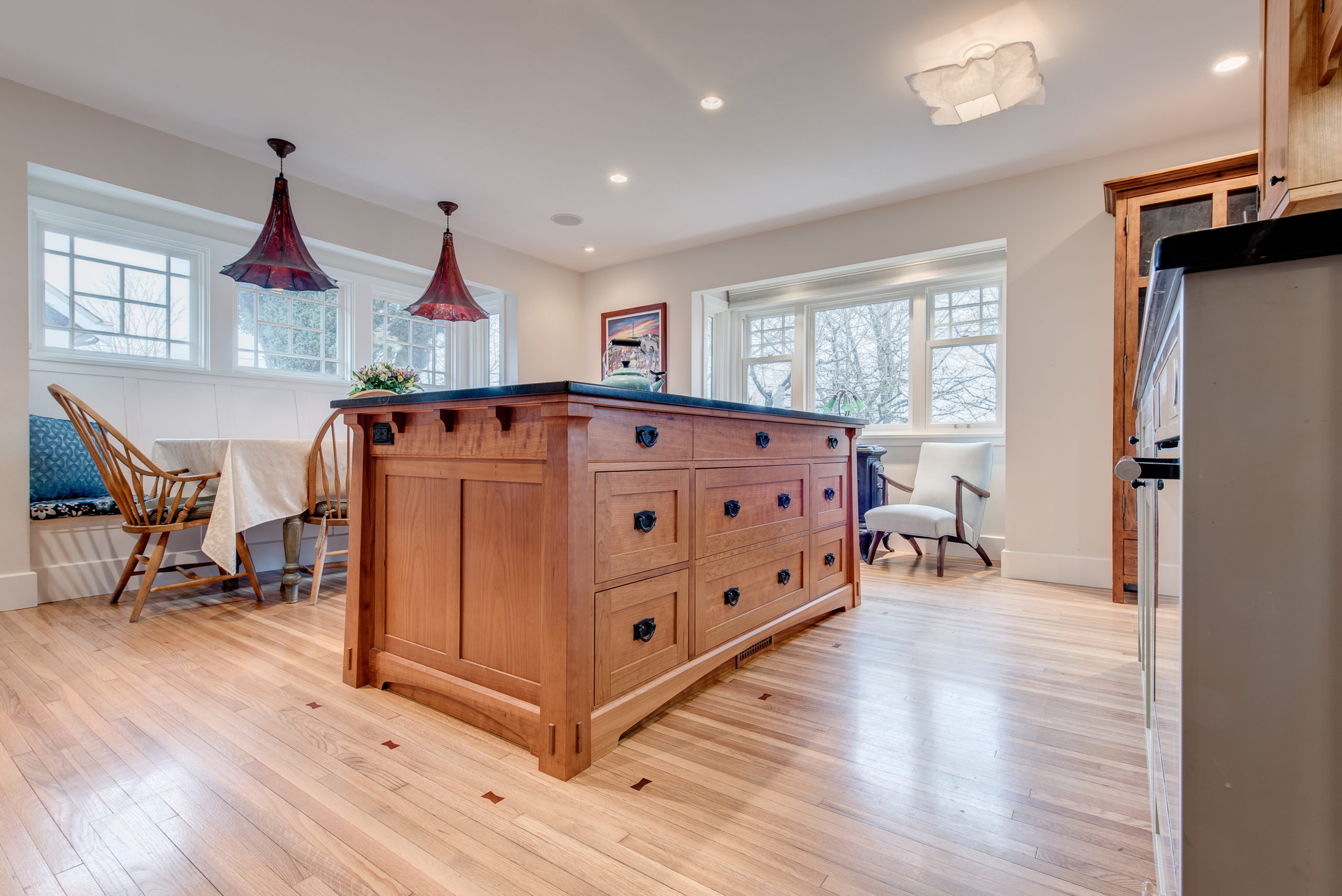
2. Tile
Porcelain, natural, and ceramic are the tried and true types of tile. Durable, cleanable, can last a lifetime and more colour, pattern, layout options that could make your head spin. However, they’re a little hard on your feet and legs. Tile is cold to the touch unless you have in-floor heating or lay heated cable prior to the tile going in. You’ll also lose anything breakable if it drops on it and it’s not easily repaired if a tile does get cracked or broken.
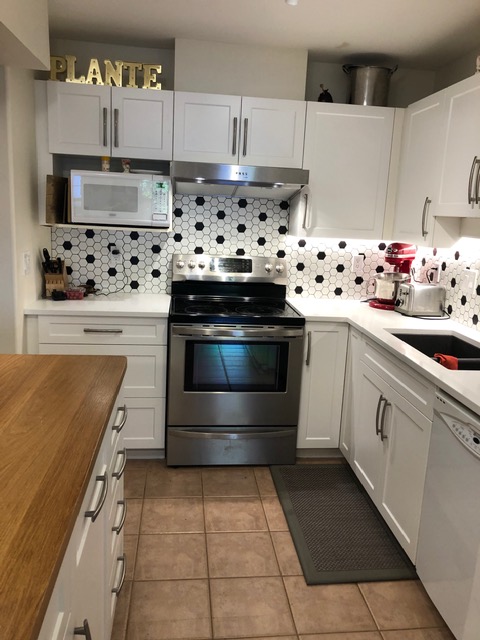
3. Linoleum or Marmoleum
Linoleum was invented in the mid-1800s but became extremely popular about 50 years ago. It’s made from linseed oil but has a variety of additives like pine resin, ground cork, sawdust, lots of different pigments and mineral fillers. It still traditionally has a burlap or a canvas backing to it. It comes in such a wide variety of colours, patterns, grades and gauges that honestly, you won’t be wanting for choice.
Marmoleum is the “all natural” version of linoleum. It typically doesn’t off-gas and is made without VOCs or toxic chemicals. There are no adverse health issues associated with production, while in use, or when it is disposed of, so it is a great option for those with sensitivities or allergies. It is also appropriate for those that are really wanting to have an eco-friendly product as it is considered truly sustainable. Its anti-static properties mean that hair, dust and dirt do not easily adhere to it, making it easier to clean. You’ll often see it in hospitals but is used residentially as well.
Both linoleum and Marmoleum come in a range of colours so you won’t be limited at all as to what might be available to you.
A couple of drawbacks are:
- Neither are easily repairable if they’re cut or damaged
- With the natural backing, like the burlap or the canvas, if water were to find its way under, you’ll get discolouration and potentially mold.
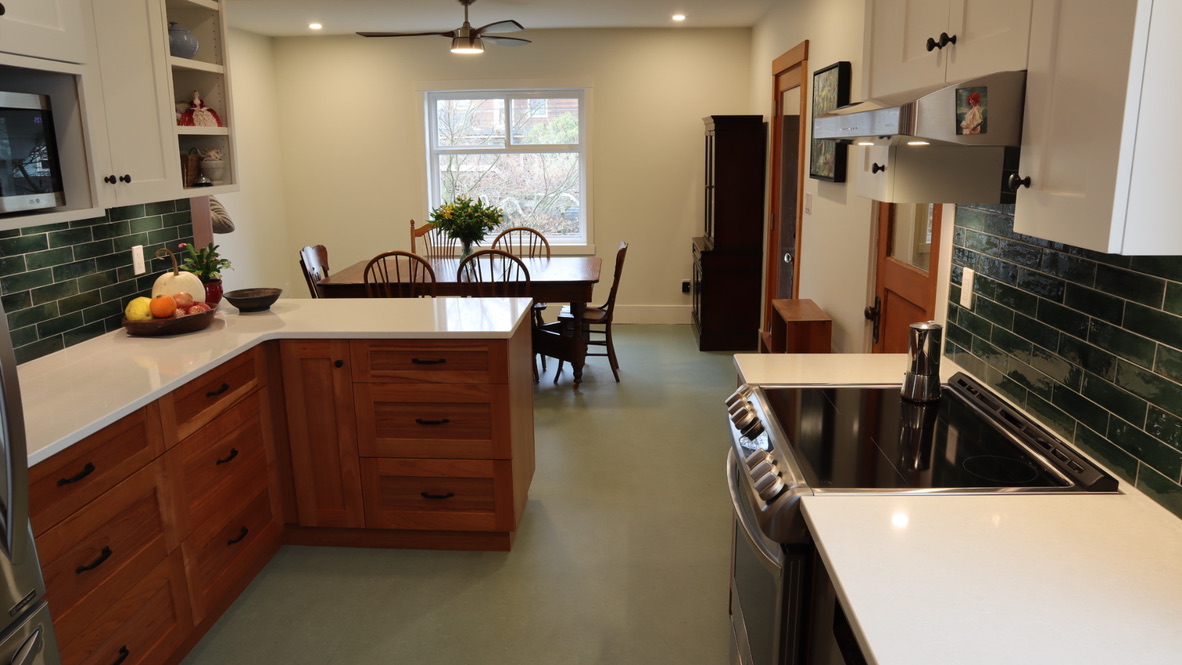
4. Luxury Vinyl Tile (LVT)
What the heck is that? Well, it’s the posh and much better version of your grandma’s vinyl or that asbestos laden VCT (vinyl composite tile) which was usually 12”x12” in size and was laid in a checkerboard pattern in basements. They are the current “in” product right now.
LVT comes in a lot of options.
- The sizes of the planks can be different widths and lengths
- They can look like wood, stone, or ceramic tile.
- They can be loose-laid, clicked together, or glued down.
- It’s really a pretty durable product. The plank itself is waterproof. However, if it’s a click or loose-laid together, water can get through the seams and under the plank to the subfloor.
- They are stain and scratch resistant, making them a pretty good option for pet lovers.
- They’re fairly soft underfoot
- They clean well
Not much downside to it other than it’s not considered eco-friendly and if you tell your folks you’re putting in vinyl they might question your logic until you educate them about this pretty cool product!
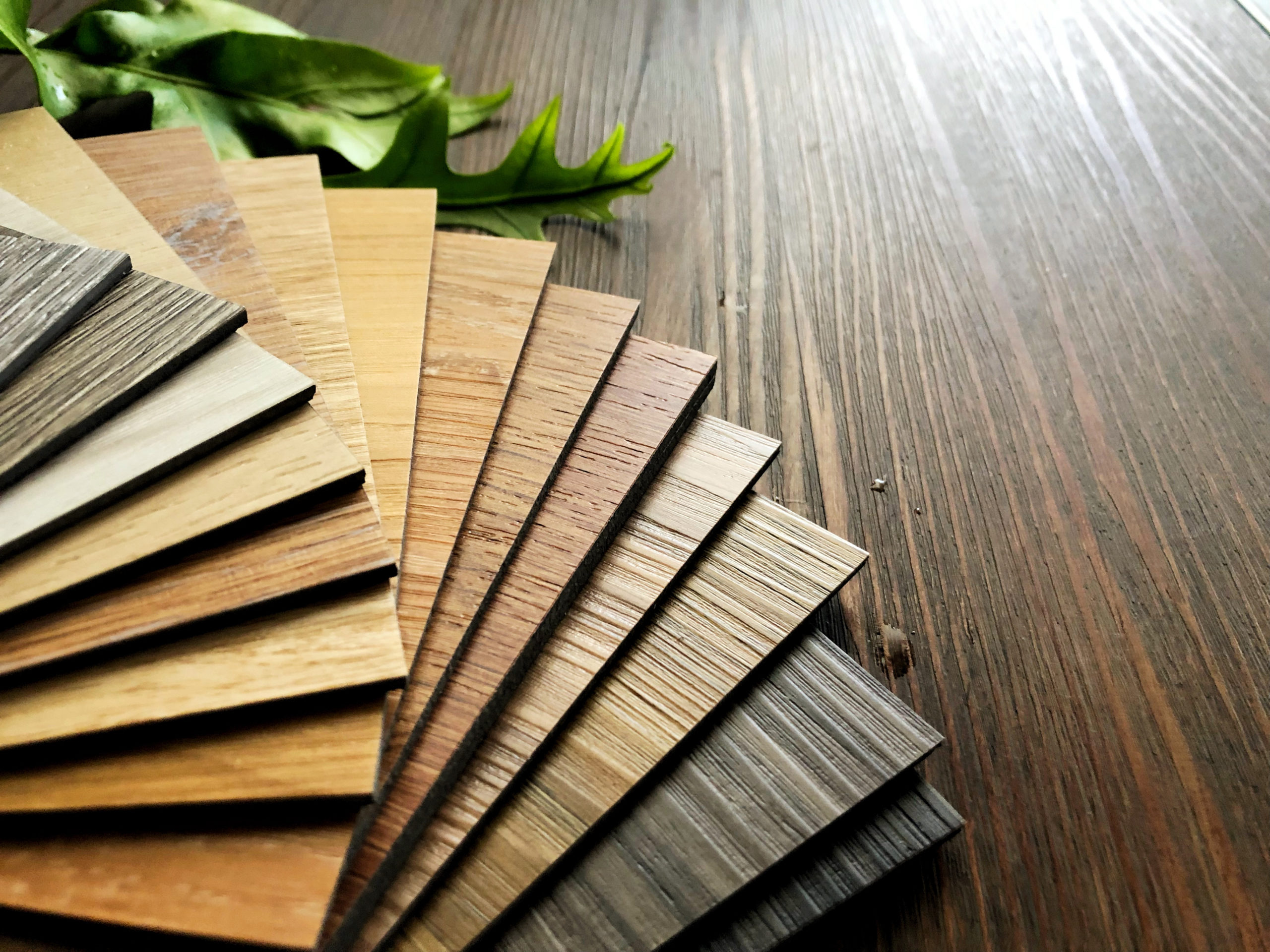
5. Cork
Cork can be used in almost any area of your home. I wouldn’t put it in the bathroom for instance, but it can be an option for a kitchen floor.
It’s a renewable resource so it’s considered a green product.
Similar to an engineered hardwood product, the cork is glued down to a plywood substrate backer and comes in a variety of plank sizes (narrow/long and squares) and dimensions.
It is really soft on the feet but can be a little bit susceptible to damage. However, that damage usually blends in with the natural movement of what the cork looks like, so it can still be a reasonable option.
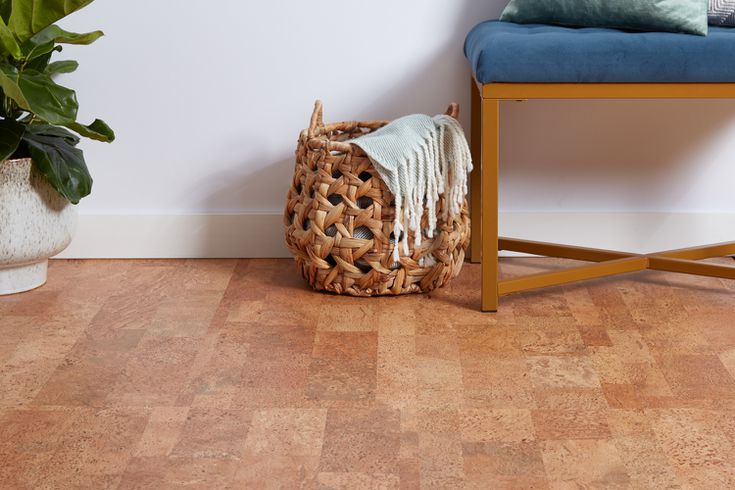
Like anything, you get what you pay for and flooring is one area that can be so disruptive to change out in the future so it’s an element that I’d suggest you choose thoughtfully.
Which goes in first, the flooring or the cabinetry?
We’ve done it both ways for clients and there are some pros and cons for each method.
Floor first:
Pros:
- It’s easier for both the install of the floor, as well as for the cabinetry
- You don’t have any weird or clumsy cuts around end panels that come right to the ground or islands.
- If you were to change the footprint of your cabinetry later on you won’t have a floor infill issues.
Cons:
- If you wanted to change your floor out later on, it would be quite a bit more challenging.
Cabinetry first:
Pros:
- You’d have the ability to change out your floor more easily in the future as it doesn’t run under the cabinetry.
- There is less chance the floor will be damaged during the cabinetry & countertop install phase.
- Slightly less material cost
Cons:
- You will have to cut out around any panels that extend to the floor and around an island or the peninsula. This may be more challenging with a sheet product like Marmoleum for instance.
Floor Preparation
Regardless of the floor option you choose, be sure to prep the subfloor properly to avoid any future issues. This may include replacing the old ship lap with some Tongue & Groove plywood glued down and screwed to the joists. Or even adding another thin layer of plywood on top of the existing subfloor in the opposite direction, with the seams off-centered so it creates a really solid foundation for your new floor. Some self-levelling often gets put in because no floor is perfectly flat. We sometimes use a bit of self-level for transitioning from one area into another so that there’s a gradual slope up or down into whatever room that we’re working in.
I just can’t say enough about making sure that the floor is prepped properly because it would be really unfortunate to have spent all this time, money, and energy putting in flooring that doesn’t stay where it should.
For more information, check out our podcast All Things Renovation at www.AllThingsRenovation.com or click on the Podcast page at www.woodbeart.com. The second series of episodes focuses on kitchen renovations.
For photos of our work click on https://woodbeart.com/our-work

